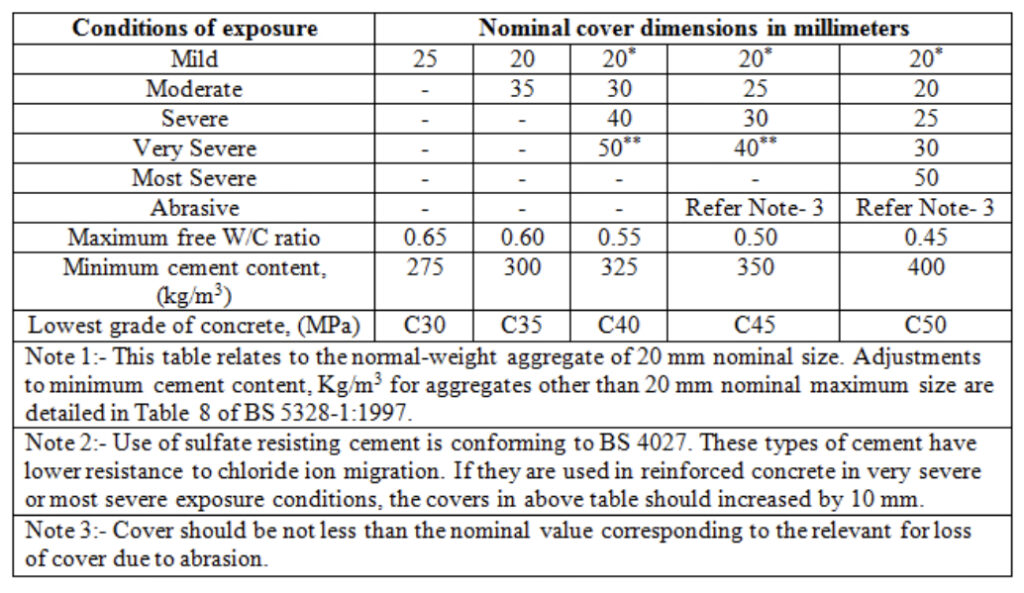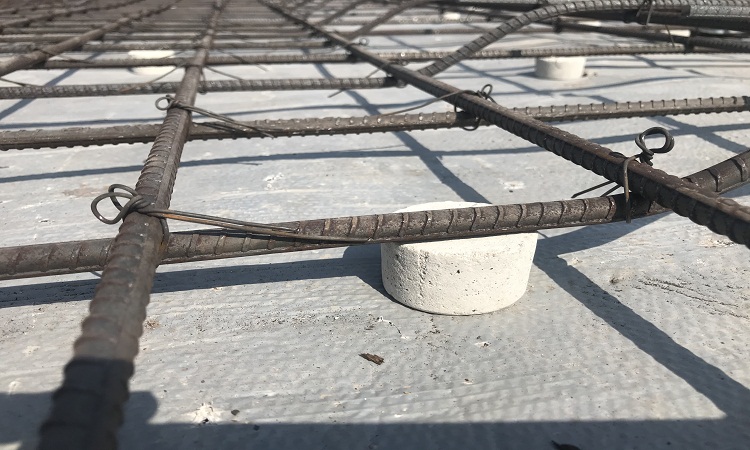Cover to reinforced concrete is the minimum thickness of concrete provided over the reinforcement steel, measured from the exposed concrete surface to the closest reinforced steel surface. Concrete is needed to cover and protect steel reinforcement within its body. The concrete cover is often subjected to impact, wear, and access to moisture along with other chemicals. The cover should therefore be strong, wear-resistant, and dense, and have low permeability. Concrete in the cover region plays an important role in the durability of the structure.
Requirements of Concrete Cover
To achieve good durability, it is of utmost importance to have the following requirements for concrete in the cover region.
- The concrete should be free from macro or large-scale defects like honeycombs, entrapped air, cracks, voids, broken edges, etc.
- The concrete should be strong and durable.
- Concrete should be dense & free from micro defects.
- The concrete should be wear-resistant.
Concrete in the cover region protects reinforcement steel in two ways.
- By providing a dense, strong, and impermeable barrier against ingress of moisture, oxygen, chlorides, sulfates, carbon dioxide (CO2), and other aggressive gases and chemicals.
- By providing a passive protective coating on the surface of the steel. Because of the alkaline nature of concrete, this coating prevents corrosion of steel. This passive protective coating remains effective as long as the concrete is strongly alkaline in the cover region. This passive protective coating remains for a longer duration for concrete of high strengths and low water to cement (W/C) ratios.
The following factors are responsible for poor quality of concrete cover.
Poor construction practices, methods, and supervision are mainly responsible for the poor quality of concrete cover, resulting in loss of durability of the reinforced concrete structure.
The following factors are responsible.
- Improper selection of concrete materials, high w/c ratio, and low concrete grade without giving consideration to the environment in which concrete structure is to be built.
- Improper batching and mixing causes a lack of cohesiveness of the mix, resultant segregation causes honey-combing and voids in concrete, especially in the cover region.
- Improper transportation and placement cause segregation of the concrete mix, resulting in honey-combing and voids.
- Improper compaction leaves entrapped air voids, resulting in porosity in concrete and easy access to the moisture and chemical that can react with steel or concrete itself.
- Improper curing results mainly in plastic and drying shrinkage cracks on the concrete surface reducing the cover, and moisture and chemicals can easily enter through these cracks and attack steel and/or concrete.
- Defective planning, placing bending, and tying reinforcement steel often results in reduced concrete thickness in the cover region and reduces the passage of moisture and other chemicals that attack steel.
- Displacement of reinforcement steel during concrete placing operation results in a considerable reduction of concrete thickness in the cover region.
- Insufficiently made cover blocks used to maintain concrete cover are often so weak, that they break during concreting operations resulting in the reduction of cover. The concrete cover blocks are made manually without proportioning, batching, mixing, compacting & curing. These results in concrete cover blocks having high porosity & low strength. Instead of protecting the steel, they become a passage for moisture and chemicals to enter and cause corrosion and durability problems.
- At many construction sites, stone chips are utilized to support reinforcement steel. They often get dislodged during concreting operations, resulting in reinforcement steel resting directly on shuttering leaving little or no cover to the bars.
- Mosaic tiles or blue metal are also used as cover devices. These too are not recommended as their quality, strength and other properties can seriously cause porosity problems for the concrete in the cover region.
- In doubly reinforced RC slabs, adequately spaced chairs should reinforcement is maintained during the concreting operations. Often chairs aren’t provided or the spacing between them isn’t adequate. This results in bars getting bent or distorted due to the movement of the workforce during concreting. This also results in reduced strength of concrete elements and also can result in reduced cover thickness.
Carbonation of Concrete Cover
Carbon dioxide (Co2), along with moisture and oxygen in the atmosphere, forms carbonic acid which attacks the concrete surface and causes carbonation resulting in a drop in alkalinity of concrete at the surface. The depth of penetration of carbonated concrete will mainly depend on the grade of concrete. Carbonation goes beyond the concrete cover.
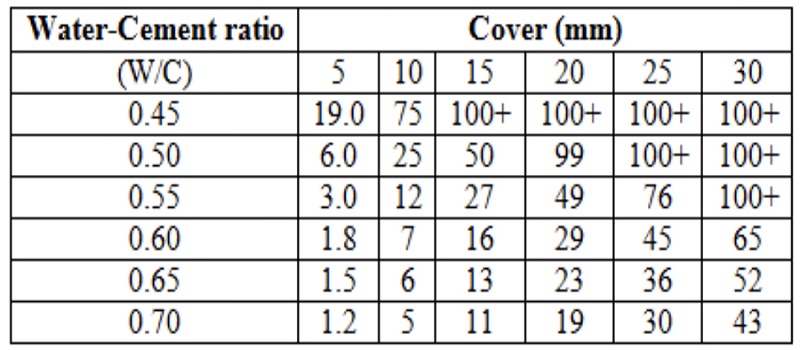
It is clearly evident from the above table that carbonation time (years) reduces as the water to cement (W/C) ratio increases for a constant cover thickness. This table applies to ordinary Portland cement, sand, and gravel aggregates.
Factors Related to Minimum Cover Thickness
Before going into the different codal specifications for minimum cover, it is necessary to note different variables that influence the specification of minimum cover.
These factors are as follows:
- Exposure conditions (location of the structural member & presence of aggressive chemicals where the structure is proposed).
- Concrete grade (strength) specified or maximum W/C specified. (Concrete with lower W/C has less microporosity. Hence, cover can be reduced).
- Maximum aggregate size used in concrete manufacture
- Diameter and spacing between reinforcement steel.
- Likely exposure to fire (Thickness cover gives better fire resistance.
Concrete Cover Codal Specifications
Concrete cover and tolerances specified by various codes of practices vary over a fairly wide range. Some codal provisions followed in different countries and given below to give an idea of variations amongst different standards.
Bureau of Indian Standards
The current IS code which specifies concrete cover requirements are IS: 456-2000. The requirements are given below.
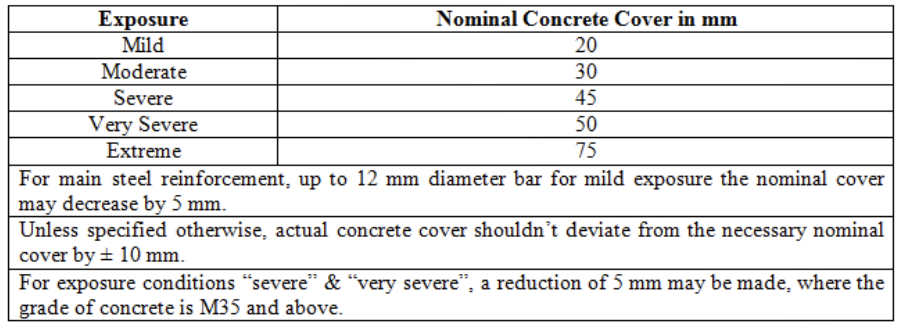
American Concrete Institute
The table below gives the requirements of cover as per ACI – 95. Although, it is clear that the amount of concrete protection has to be appropriately improved in corrosive or other severe environments while utilizing this table.
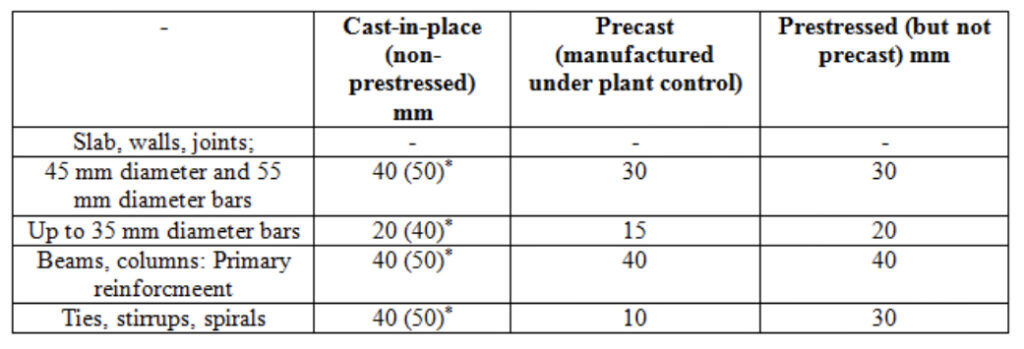
British Standard
The BS 8110 (Part I) 1997 specifies the nominal cover based on exposure conditions (mild to most severe), maximum free water-cement ratio (W/C), minimum cement content, and lowest grade of concrete. In fact, amongst all standards, BS specifications seem to be most logical and appropriate, as it takes into account all important factors which are related to cover.
